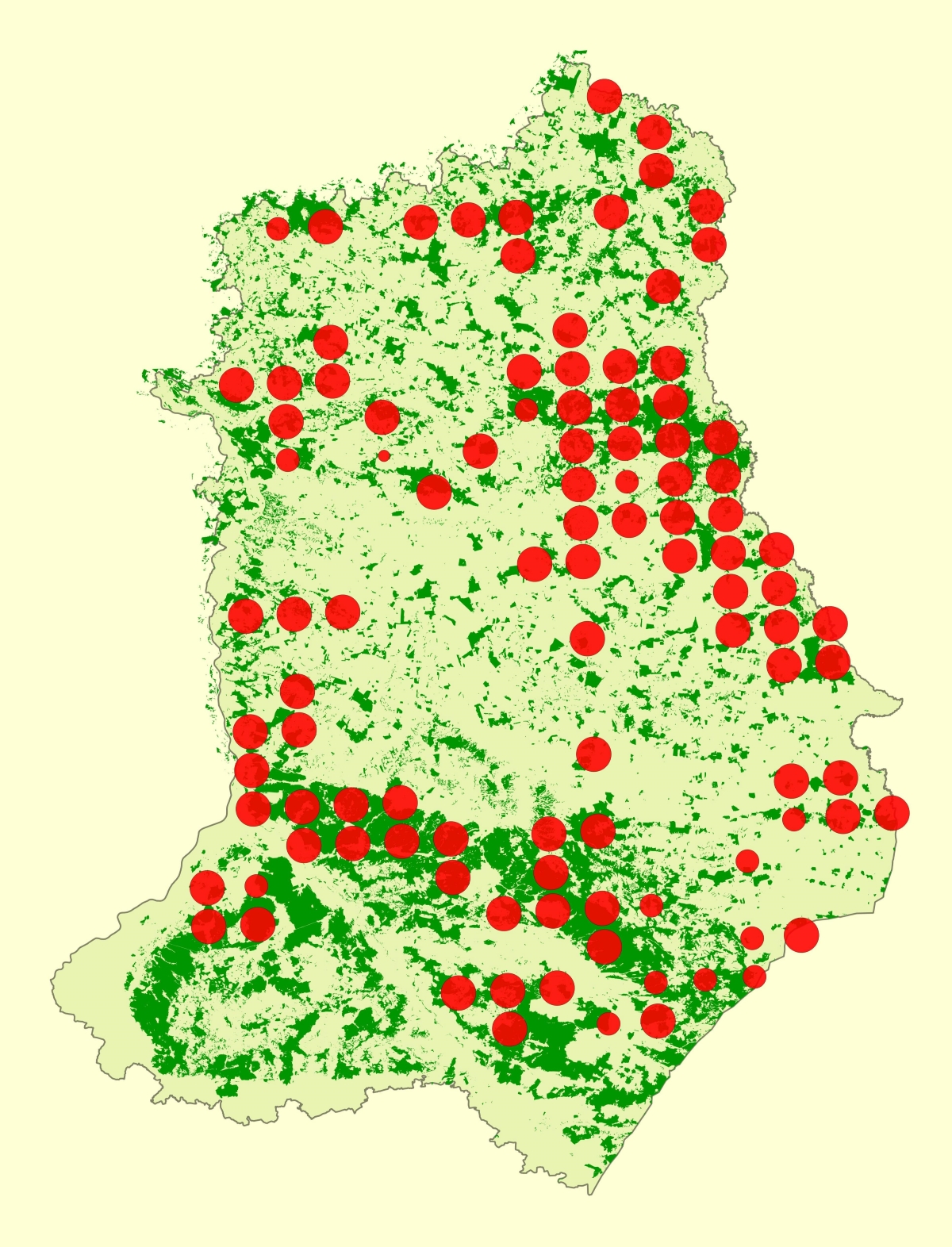|
Species characteristics
The black stork (Ciconia nigra), in contrast to the commonly known white stork, is more rarely observed and avoids human contact. The common name in Polish is "hajstra". It is slightly smaller than the white stork and can be up to 100 cm of in length and 190 cm in wingspan. The colouration of this species is a negative of the white stork. It has black plumage with metallic, greenish and purple gloss. Belly, undertail coverts and chest are white, which makes this species easy to distinguish during flight from the white stork, whose strongly contrasting black remiges are visible. Adult birds have intensely red legs, bill and skin around eyes. Sexual dimorphism almost does not occur; however males are on average slightly larger than females.
The black stork is a migratory bird, spending the winter period in Africa (such as in Lebanon, Sudan and Ethiopia). Its autumn migration lasts from August to September and it returns from its winter quarters in March and April. During the breeding period black storks form monogamous pairs and occupy nesting grounds covering from 50 to 150 km2. They build their nests on old and strong trees, most often on oak, pine and alder, in the mountains also on beech, and use them for several years. The nest is built by both partners. The female lays an average of 3-5 eggs, which are incubated by both parents. Nestlings do not hatch at the same time and in case of food shortage the youngest and the weakest nestlings are sometimes killed or pushed out of the nest. The pair produces one brood per year.
Nesting habitat
The black stork nests away from human habitats. It prefers large forest complexes with considerable areas of wetlands and swamp. The bird chooses those areas where there are suitable feeding conditions – fish ponds, meadows and river valleys.
Diet
The black stork mainly feeds on amphibians and small fish. Insects, annelids, small mammals and nestlings of other birds serve as a dietary supplement. During hunting it paddles in the not too deep waters of rivers and streams. If sun lights the surface of the water too strongly and hinders prey detection, they hunt with their wings widespread to provide shadow and better visibility.
Distribution
The black stork populates the territory of Europe and Asia between the 30th and 61st degree of north latitude. An isolated population lives in Southern Africa.
In Poland it is found throughout the country, especially in lowlands and uplands and in mountains up to 1100 metres above sea level.
 Rozmieszczenie stanowisk bociana czarnego na podstawie Atlasu ptaków lęgowych Lubelszczyzny (Wójciak i inni 2005) Rozmieszczenie stanowisk bociana czarnego na podstawie Atlasu ptaków lęgowych Lubelszczyzny (Wójciak i inni 2005)
Conservation status
The black stork is a rare breeding bird and subject to strict protection. Protection zones are established around black stork nests with a radius up to 200 m for the whole year and a radius up to 500 m periodically (from 15 March to 31 August. This species is listed in Attachment 1 to the Birds Directive. It is estimated that the national population amounts to about 1100-1200 breeding pairs. Black storks are the most abundant in the north-eastern and eastern parts of the country.
Threats
The main threats to black stork include:
- frightening birds near the nests;
- wetland drainage;
- poaching during migration and bird deaths due to collisions with obstacles;
- lack of nesting sites.
|









